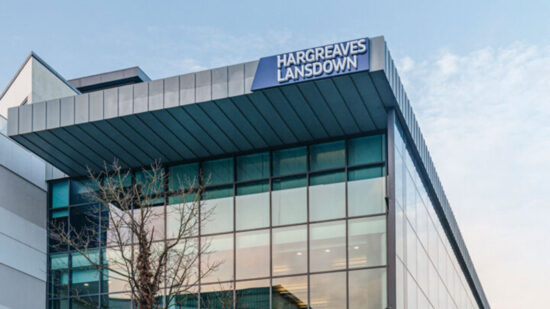Higher and additional rate earners in the UK are eligble to claim additional tax relief on their personal pension each year, but the majority are failing to do so.
This means people with an annual income of between £50,000 and £150,000, or over £150,000 ($195,177, €176,614).
A freedom of information request from online pension provider Pensionbee found that, on average, 81% of higher rate and 54% of additional rate taxpayers failed to claim their tax relief in financial years 2016/17 and 2017/18.
For higher rate earners, this was approximately £770m for 2016/17 and £769m the following year.
Figures were significantly lower for additional rate taxpayers, who failed to collect £50m and £61m in tax relief, respectively.
Not too late
Peter Bradshaw, director of Selectapension, told International Adviser people can still make a claim.
“The tax relief for higher and additional rate taxpayers can be claimed by the individual submitting a self-assessment return,” he said.
“Lost relief in earlier years can be claimed by letter to HM Revenue & Customs (HMRC), back up to four years after the tax year in question; but the refunded tax does not go into the pension, as the contributions have already been made.
Bradshaw added that taxpayers can carry forward any annual allowance they have not used in the previous three tax years, and make pension contributions subject to tax relief, accordingly.
“Refunds could also be used to spread investments, especially, for example, if individuals haven’t used up their Isa allowances,” he said.
“So, I would encourage submitting a self-assessment return, any refund could be invested in a pension, thereby qualifying for tax relief, but care should be taken to avoid exceeding allowances.
Advisers to the rescue
But the system can be very complex, and the help of a financial adviser is needed in most cases, Ian Browne, pensions expert at Quilter, told IA.
“For higher and additional rate taxpayers, making the most of the tax reliefs available is complicated and the help of a financial adviser is essential.
“Someone may, or may not, have a personal allowance for income tax purposes, depending on their income level, and pension contributions can potentially influence the level of that personal allowance.
“In addition, when contributing to a pension you may need to take into account the standard annual allowance, tapered annual allowance, alternative annual allowance, money purchase annual allowance and the lifetime allowance.
“And finally, you also need to take into account what [the] employer has paid,” he added.
Alternative ways
According to Aegon pensions director Steven Cameron, people could even call HMRC and get their tax relief.
“In a world where millions of people have been automatically enrolled, many give little thought to their pension, and this may mean they simply don’t realise if they are higher or additional rate income taxpayers that they can, and should, claim back extra tax relief if in a ‘relief at source’ scheme,” he told IA.
“These figures look alarming, and it’s worth mentioning that there is an alternative to claiming tax relief through self-assessment.
“People can claim the extra tax relief by phoning HMRC. This is likely to reduce the number actually losing out, but it’s a timely reminder to check your position.”
Evaluate your client’s situation
But things might be a little different for those who don’t pay tax in the UK, Cameron added.
“There has rightly been a lot of concern that non-taxpayers in the alternative, net pay schemes don’t get the 20% tax relief they would have got automatically in relief at source schemes.
“The flip side is that, in a net pay scheme, higher and additional rate taxpayers get relief immediately at their highest marginal rate without having to do anything, and therefore can’t fall into the trap highlighted here.
“HMRC currently doesn’t allow a scheme to offer two sections with one operating net pay, which works well for higher earners; and one relief at source, which is good for non-taxpayers.
“But this might be a good way forward for employees at both ends of the earnings spectrum,” he added.
Reform the relief
The complexity of the pension tax relief system and the lack of awareness earners have on how to navigate it have prompted both investment platform Hargreaves Lansdown (HL) and Pensionbee to call for it to be reformed.
Nathan Long, senior analyst at HL, said: “The UK’s whole pension tax relief system is a bloated expensive mess, riddled with problems and inconsistencies.
“Any attempt to fix the taper and net pay problems in isolation is likely to make the situation worse, as it heaps in further complexity.
“We urge the government to take advantage of this window of opportunity, to improve people’s retirement prospects, get better value for money for the taxpayer and reframe any government spending as an incentive not a subsidy.”
Hargreaves has also compiled a policy paper on how the UK government should amend the current system.
Many losers few winners
“Most people don’t even understand how tax relief works, yet the government spends over £50bn a year on it,” Lang added.
“For many people, it’s just not working; this includes the self-employed, high earners, low earners, non-earners – such as women taking a career break and those who have retired and then gone back to work.
“The big winners from the current system are people on above average incomes, provided they don’t earn too much, and public sector workers in final salary schemes.
“This just doesn’t stack up as a fair deal across society anymore.”
Romi Savova, chief executive of Pensionbee, said: “A lack of awareness of how the tax relief system works means that too many people are missing out on one of the key benefits of pension saving.
“While relief for basic rate taxpayers is automatically added to a pension as a tax top-up, any further tax relief owed to higher and additional rate taxpayers must be claimed through self-assessment.
“This is yet another reason why the pensions system is in need of dramatic simplification.”
Simplification of pension taxation is one of the main areas advisers would like the UK government tackle in its March 2020 budget.








